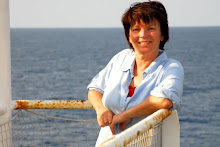AISSA (Aicha Waldatala)
Sarah Root is a physician assistant and missionary with Medsend, currently working with the Medical Centers of West Africa at the Meskine Hospital in Cameroon, Africa. In May of 2009, she was walking by the hospital pharmacy when she noticed a woman and a little girl with a dirty rag wrapped around her head. The girl was covered with flies and the smell of infection was so strong, Sarah could smell it five feet away. She asked the woman to bring the girl to her office, where she uncovered a large wound under the rag. It extended from her right eye to her jaw, and from the corner of her lip to her ear. The skin had been eaten away, totally exposing what was left of her cheek. Her right eye was swollen shut. Weighing only 24 pounds at five years of age, she was near death. She was hospitalized immediately.
The diagnosis was noma, a rapidly progressing, gangrenous disease which destroys
facial tissue, primarily of the mouth and cheek. It usually appears as gingivitis, or other tooth related problem, in children between 2 and 6 years of age, often following a childhood disease, such as chicken pox, when the immune system is compromised. Its effects are permanent and require plastic surgery to repair. An estimated half million cases are reported yearly, mainly in the poorest countries of West Africa . Up to 90 % of noma cases die within a month. The most grievous fact about noma is that it is totally avoidable, if children have clean drinking water, good nutrition and hygiene, and vaccinations for childhood diseases. The progression of the disease can be arrested, if caught immediately and treated with antibiotics and good nutrition.
Aissa’s father had abandoned her at birth. Her mother abandoned her when she was four years of age. She was being raised by her grandmother and uncle. It is estimated that the noma attack occurred in April. Jean, the uncle, stayed with her in the hospital.
The infected parts of her cheek were removed at Meskine Hospital and she was placed on a feeding tube. The next day, her name was listed on the “poor fund” so her care would be provided by the hospital without charge. This provision also covered food for both Aissa and Jean.
After ten days of care, it was discovered that Aissa was severely anemic and was in desperate need of a blood transfusion. Like so many of the African people, her uncle was fearful of donating his blood. Frances, one of the missionaries working with Sarah, donated the badly needed blood.
But the bumpy road to recovery was still not smooth. After doing his rounds one morning, a local doctor told the medical staff that Aissa was not going to heal, was probably going to die and should be sent home. The day nurse, who was in agreement, shared this opinion with Jean. But the hospital’s surgeon said that there was still a possibility for a surgical treatment for Aissa. Because of his influence, she was not discharged.
Aissa began to relax in her new surroundings. A favorite of the medical staff, she was also enjoying the enveloping love of Sarah and the missionaries as relationships of trust and caring were building. Within four months, she made a miraculous recovery. She began gaining weight and her facial wound was significantly smaller. Aissa was getting the loving care every child craves and deserves, and it was returning the sweet kiss of life to her.
Then word came that Abigail Boys, a general surgeon who volunteers her services at the hospital, had a working relationship with the Mercy Ships medical staff. She had worked with Dr. Gary Parker several times in field services since 2002, and was currently training to be a maxillo-facial surgeon. She knew that Aissa could get the reconstructive surgery she needed with Mercy Ships onboard the hospital ship the Africa Mercy. The only question was how to get her there.
Having done extensive travelling in Africa, Abi had witnessed the need of many children for specialized surgery not available in their own countries. She felt called to provide a way for children in developing nations to get the surgery they needed. Aissa arrived at the Meskine hospital while Abi was in the process of setting up Willing and Abel, a charity specifically established to arrange such surgeries. One year later, through Willing and Abel, Aissa, Jean and Sarah travelled to the Africa Mercy in Lome, where Mercy Ships volunteer doctors, Dr. Gary Parker, Dr. Tertius Venter, and Dr. Tony Giles, three of the top maxillo-facial surgeons in the field, performed the reconstructive surgeries on her face.
During her month-long recovery aboard ship, Aissa was somewhat constrained to the hospital ward. Nevertheless, she enjoyed the focused attention of a bevy of volunteer nurses and many other crew members from several different countries. Despite the fact that none of the other children recovering in the ward could speak her language, she managed to make friends while having fun playing games, coloring, and singing.
One more surgery is planned to complete the reconstruction of Aissa’s face. But that will take place sometime in the future. For the present, she will return to her village where she will have some time to get reacquainted with family and friends.
Aissa is a child of very strong character and will. If she were not, she would, in all probability, have died from the noma. But she didn’t. In a society where vulnerable children are not valued as highly as adults, where utter poverty means there are no answers, she hung on, despite the appearance of no hope. She was rewarded for her struggle because of the love and combined abilities of many whose calling is to provide hope. Through their loving action, she has survived and thrived.
Subscribe to:
Post Comments (Atom)










































No comments:
Post a Comment
Note: Only a member of this blog may post a comment.